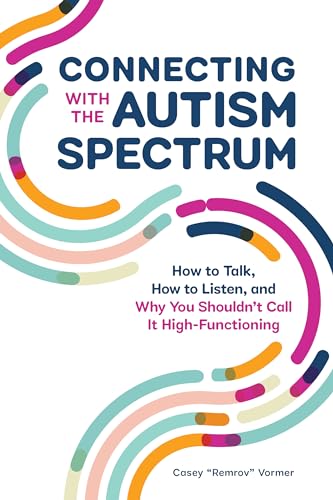Connecting With The Autism Spectrum
How To Talk, How To Listen, And Why You Shouldn't Call It High-Functioning
Casey "Remrov" Vormer
BOOK REVIEW

Navigating the complexities of communication with individuals on the autism spectrum is not merely an academic exercise; it's an urgent call to humanity. Connecting With The Autism Spectrum: How To Talk, How To Listen, And Why You Shouldn't Call It High-Functioning by Casey "Remrov" Vormer serves as a crucial beacon in this vital dialogue. This book transcends conventional boundaries and dives headfirst into the essential art of connection.
In a world often oblivious to the nuanced realities faced by the autism community, Vormer dismantles the stigmatizing label of "high-functioning." This term, with all its connotations and misconceptions, inhibits authentic understanding and limits the perception of abilities. Through an empathetic lens, Vormer urges us not just to challenge our terminology but to enrich our interactions, fostering deeper and more meaningful relationships. Readers are compelled to re-examine their views on autism, moving beyond simplistic categorizations to an appreciation for the diverse experiences that exist within the spectrum.
What sets this exploration apart is Vormer's ability to translate technical jargon into relatable, human-centric dialogue. The book resonates as an intimate conversation rather than a clinical guide, making it accessible for parents, educators, professionals, and even those who are simply eager to grasp the intricacies of autism. Every page is replete with anecdotes, real conversations, and even humorous moments that draw the reader in and allow them to feel, without reservation, the emotional weight of the narratives being shared.
As readers traverse the pages, they are not treated as passive observers but rather as active participants in the transformative journey. The techniques and strategies Vormer lays out for effective communication do not read as mere checklist items; they are invitations to engage with empathy and intentionality. The depth of the author's understanding shines through, revealing not only the challenges but also the profound beauty inherent in these relationships.
Compassionately attuned to the reality of sensory processing issues, social misunderstandings, and emotional dysregulation, Vormer crafts a narrative that is as educational as it is heartwarming. He offers a lifeline to those lost in frustration or confusion, proving that genuine connection is attainable. Critics have noted the book's refreshing take on a subject often mired in clinical detachment, praising Vormer for bringing a much-needed human approach to autism discourse.
However, not all opinions are uniformly glowing. Some readers feel that the intersections of autism with culture and identity could be more pronounced, arguing that the book occasionally skirts important discussions. While Vormer excels in articulating the experience of communication between neurotypical individuals and those on the spectrum, there's a call for further exploration into the internal experiences of autistic individuals themselves.
What emerges from these pages, beyond mere communication techniques, is a raw sense of solidarity-a call for solidarity that reverberates through the community. The lessons learned here push readers towards not just acceptance, but advocacy, encouraging a more inclusive society that empowers rather than sidelines those on the autism spectrum.
This work is a blessing to those who have ever struggled to connect with someone who sees the world differently. If you find yourself grappling with how to engage meaningfully with an autistic friend, family member, or student, this book is your roadmap. The insights Vormer offers promise not just to transform individual relationships but to nurture a broader cultural shift towards understanding and empathy.
In the end, Connecting With The Autism Spectrum isn't just a guide-it's a movement, a chance to be part of something larger than ourselves. Dismiss the preconceived notions, and instead, immerse yourself in this enlightening text. Let it shake you out of complacency and onto a path of profound transformation, illuminating the power of genuine human connection. Are you ready to embrace this enlightening journey? The stakes are high, but the rewards are boundless. 🌟
📖 Connecting With The Autism Spectrum: How To Talk, How To Listen, And Why You Shouldn't Call It High-Functioning
✍ by Casey "Remrov" Vormer
🧾 144 pages
2020
#connecting #with #autism #spectrum #talk #listen #shouldnt #call #high #functioning #casey #remrov #vormer #CaseyRemrovVormer